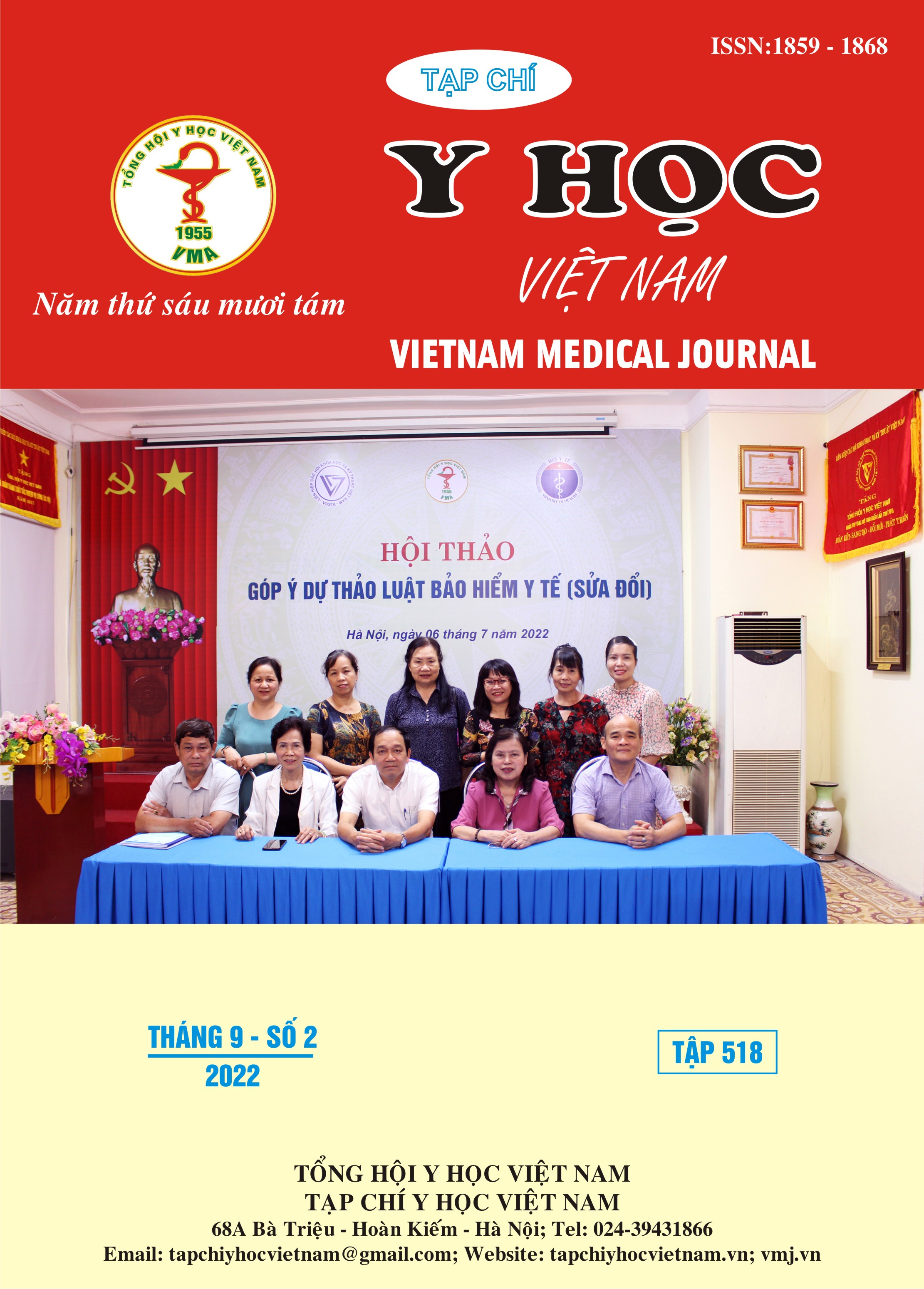ĐẶC ĐIỂM LÂM SÀNG TRIỆU CHỨNG KÍCH THÍCH THẦN KINH THỰC VẬT Ở NGƯỜI BỆNH RUNG NHĨ CÓ RỐI LOẠN LO ÂU
Nội dung chính của bài viết
Tóm tắt
Mục tiêu: Mô tả đặc điểm lâm sàng triệu chứng kích thích thần kinh thực vật ở người bệnh rung nhĩ có rối loạn lo âu. Đối tượng và phương pháp nghiên cứu: Mô tả cắt ngang người bệnh rung nhĩ điều trị nội trú tại Viện Tim mạch Quốc gia – Bệnh viện Bạch Mai từ tháng 8/ 2021 đến 10/ 2022. Kết quả: Có 39,6% người bệnh rung nhĩ mắc rối loạn lo âu. Triệu chứng kích thích thần kinh thực vật là triệu chứng hay gặp nhất ở nhóm người bệnh này, gặp ở 100% số người bệnh. Triệu chứng hệ thống tim mạch triệu chứng thường gặp nhất, gặp ở 100% người bệnh. Các triệu chứng kích thích thần kinh thực vật ở các hệ cơ quan khác như hô hấp (99,5%), tiêu hóa (96,4%), tiết niệu (74,6%), thần kinh- cơ (91,4%), triệu chứng toàn thân (94,9%) cũng thường gặp. Phần lớn người bệnh biểu hiện các triệu chứng này ở mức độ nhẹ và vừa. Kết luận: Rối loạn lo âu là bệnh lý thường gặp đi kèm với rung nhĩ, triệu chứng kích thích thần kinh thực vật là triệu chứng rất phổ biến và cần lưu ý ở nhóm người bệnh này.
Chi tiết bài viết
Từ khóa
rung nhĩ, rối loạn lo âu, kích thích thần kinh thực vật
Tài liệu tham khảo
2. Goren A, Phatak H, Gupta S, Liu X. Quality of Life, Activity Impairment, and Healthcare Resource Utilization Associated with Atrial Fibrillation in the US National Health and Wellness Survey. Baradaran HR, ed. PLoS ONE. 2013;8(8):e71264. doi:10.1371/journal.pone.0071264
3. Carroll D, Lane D, Thrall G, Lip GYH. Depression, Anxiety, and Quality of Life in Patients With Atrial Fibrillation. Chest. 2007;132(4):1259-1264. doi:10.1378/chest.07-0036
4. Hansson A, Madsen-Härdig B, Bertil Olsson S. Arrhythmia-provoking factors and symptoms at the onset of paroxysmal atrial fibrillation: A study based on interviews with 100 patients seeking hospital assistance. BMC Cardiovasc Disord. 2004;4(1):13. doi:10.1186/1471-2261-4-13
5. Sears SF, Barksdale DJ, Thompson TS. The Effect of Anxiety and Depression on Symptoms Attributed to Atrial Fibrillation: DEPRESSION, ANXIETY, AND ATRIAL FIBRILLATION. Pacing and Clinical Electrophysiology. 2014;37(4):439-446. doi:10.1111/pace.12292
6. Vasilopoulos G, Koutelekos I, Polikandrioti M, et al. Anxiety and Depression in Patients with Permanent Atrial Fibrillation: Prevalence and Associated Factors. Cardiology Research and Practice. 2018;2018:1-9. doi:10.1155/ 2018/7408129
7. Lane DA, Nouwen A, Langman CM. Illness perceptions, affective response, and health-related quality of life in patients with atrial fibrillation. Journal of Psychosomatic Research. 2009; 66(3) :203-210. doi:10.1016/ j.jpsychores.2008.10.007


